FILM REVIEWS – THE MAGGIE AND WHISKY GALOREby Tom Doran The Tartan Day Film Festival was held on April 5th at Brooklyn College, sponsored by the Saltire Society of New York – with lectures and presentations by Prof. John Beatty. The two films chosen were and are classics – and two of the finest films to come out of Scotland (in one form or another). 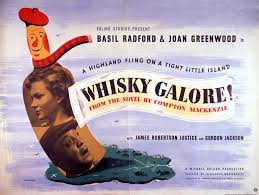 Whisky Galore First up was Whisky Galore (1949) – a most famous comedy with a sterling reputation and amazingly enough based on a real incident. During WW2 in Britain, virtually everything was rationed – including Scotch. A ship heading for Jamaica with 10’s of thousands of cases of fine Scotch Whisky ran aground during a storm off the island of Eriskay in the Hebrides. The crew was rescued by the Islanders, but when they found out what the cargo was, they went wild with enthusiasm and according to their views on salvage rules, they made haste to bring ashore thousands of bottles of whisky – something they had done without for some time. Sadly, though they hid, drank and contrived to keep the precious “water of life” for themselves, a local customs official decided to prosecute and went after the islanders with a vengeance. Some had to go to court, but due to the judges being local and more than understanding of the circumstances, most were let go. Some had small fines imposed. This only made the customs agent even more furious and further actions were taken – with some islanders actually serving time in prisons on the mainland. The locals did not treat the incoming custom agents who followed in force with anything like the legendary Highland hospitality. In the end the ship was dynamited – to the horror of the whisky loving islanders. 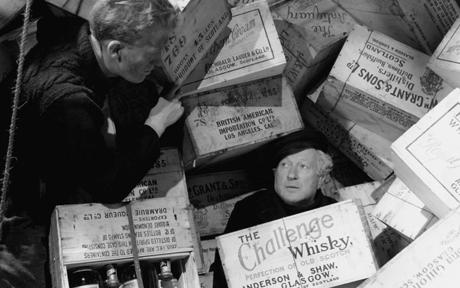 This of course all made a great idea for a film – and the famous Ealing Studios, well known for their comedies thought this was a ripe subject for some humorous adventures – a mostly unexplored background for a film (Scotland), and a story bound to appeal to many – if not for its execution alone, but the near absurdity of the tale. 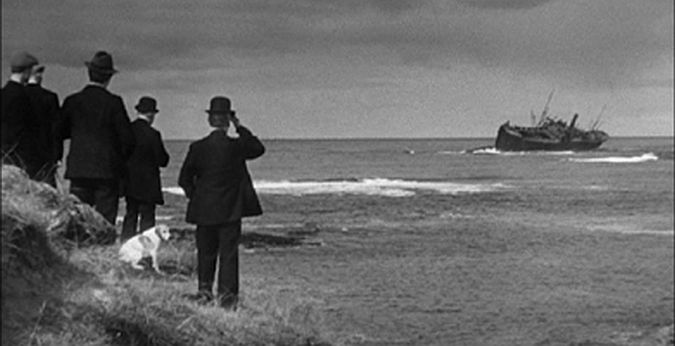 To put things on the road Scottish director Alexander Mackendrick was assigned the task of bringing this crazy tale to life. Whisky Galore was based on a novelized book of the event by the prolific Scottish writer, Compton MacKenzie (a co-founder of the Scottish National Party). 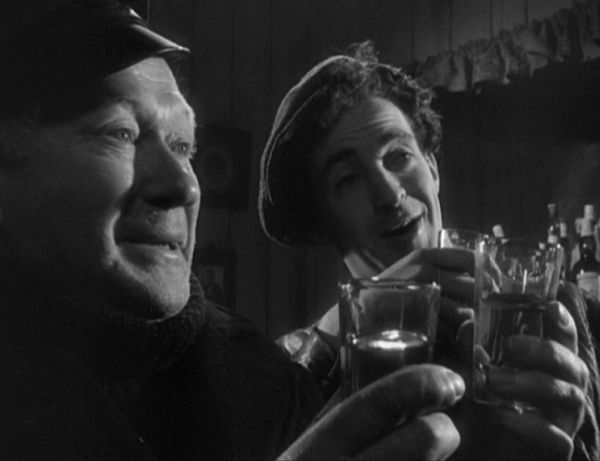 The film followed, basically, the events on the true story – but of course added real characters and elements of personal peculiarities and humor to tell the tale (and also altered from the novel). Instead of the real life customs agent, an English officer of the home guard is the antagonist – trying to use his limited military authority and experience to put an end to the pilfering of the whisky and to uncover the many hiding places – he of course fails at every turn. It was and remains a charming film – full of real quirks, great fun and actual suspense – with the added benefit of a natural and real environment. Filming dramatic films (or comedies) was a rare thing in those days, and it’s nice to see a kind of time-capsule of the Scottish people, locations and attitudes. Though peopled with many English actors, some Scottish actors did have leading roles – most importantly Gordon Jackson as a local school-teacher (who has his life complicated by his strict teetotaler mother); Jean Cadel, Morland Graham, Duncan Macrae, and Hitchcock actor Wylie Watson (as the shop-keeper). James Robertson Justice (a “would-be” Scot: see Scotia News issue May, 2013 for a short article on him) also had a good role. The movie was filmed for the most part on the island of Barra. MacKendrick went on to say that he thought the only actual “Scot” of the film was the English home guard captain (in his attitude and demeanor) and claimed the Islanders were essentially behaving more like the Irish than any Scot he knew. The film ends happily – the English captain thwarted nicely and no one getting fined or going to jail like their real life counterparts. The film was a roaring success – even here in America where it was known as Tight Little Island. It fostered a kind of sequel entitled Rockets Galore – again based on a Compton MacKenzie novel. Not actually a sequel, but some of the same actors appeared, and some of the same characters and locations that featured in Whisky Galore. As this article goes to print, a remake is currently in post-production, directed by Scottish director Gillies MacKinnon. It stars Scottish actor James Cosmo and English comedian/actor Eddie Izzard. Whether or not it will capture any of the atmosphere, charm and popularity of the original remains to be seen. The 2nd film of the festival is a lesser known film – but no less of a film – The Maggie. After Whisky Galore, Mackendrick went on to direct some of his even more famous films – The Man in the White Suit, The Ladykillers and The Sweet Smell of Success. But just before the Ladykillers, he returned to Scotland for Ealing to film The Maggie – a delightful film with some very serious undertones. Inspired by a series of stories about a “Puffer” captain (a puffer is a small transport vessel, well loved in Scotland – mainly transporting coal, it nevertheless was a welcome sight when it brought in and took away, supplies to some of the more remote parts of Scotland’s waters) written by Neil Munro, the tale of the film on the surface is quite simple. A somewhat devious ship’s captain of a small transport vessel is in desperate need of 300 pounds to secure his boat’s license. Through a series of mistakes, a rich American business man (played by American character actor Paul Douglas) accidentally hires the boat to take a household's worth of furniture and personal belongings up north in order to furnish his new home. 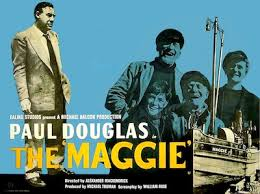 The film follows a series of mini-adventures as the short journey turns into a mini-Odyessy. This infuriates the business-man, used to having people jump when he says jump. The ragged boat and its more ragged small crew (which includes a young boy who knows no other life) live by a different set of rules – or rather time-tables. The personalities of the Highlanders and their particular sense of both time and importance tests the American who tries desperately to undo what has been done – feeling duped by the captain and the lack of reliability. He flies in pursuit and finally catching up with him decides not to let him out of his sight He takes up a cramped and uneasy residence on the boat – and feeling entitled to dictate his wishes (he did actually pay them), he questions every single delay. In the end the boat runs aground and with his own engineering skills, helps repair the engine and re-float the boat – ditching all of his own “precious” cargo overboard in order to get the boat off the rocks. He lets the captain keep his money (which in essence saves his very life) – and in return the wily old man renames the boat after his accidental benefactor. 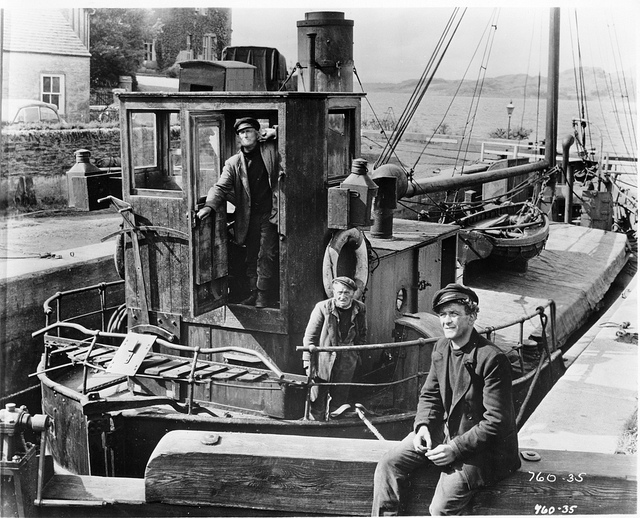 On the surface a simple enough Highland “fantasy” – devious, but well meaning stereotypes; the “old” versus the “new” - a clash of cultures in every possible way. But it is more than that. Some of the characters seem somewhat unlikeable. You actually feel sorry for the American business-man. Though he doesn’t understand quite what is happening, and does some things that seem rather inappropriate, given the circumstances, you sort of want him to prevail. You feel with him, that while not actually being taken advantage of, he still isn’t quite getting what he wants when he wants it – something the Scots don’t really understand. After all, if they have to stop the boat to help someone, or attend a party for a 100 year old man, well, that’s more important, to them, than an arbitrary time table. The captain and small crew (including a young boy, who is not the nicest of boys – but a boy with real feelings and more, an understanding of his way of life) are not really being cruel or devious or taking advantage of a naive foreigner, but just essentially living their lives as they have always done. The American for the most part is the one who changes, slowly but surely, by this adventures with this crew (as might be expected) and their wee boat – but some of his own sense rubs off a bit on the crew. Not perhaps as much as one might expect, but it is there. 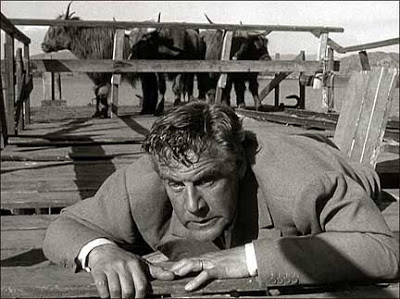 The interplay between Paul Douglas (the American) and Tommy Kearins (Dougie, the wee boy) is actually very complicated and detailed and in many ways a center of the film. It’s not a simple interplay of miscues – but real feeling and depth of understanding (or lack thereof) of how the world is viewed by different cultures. At one point, Dougie, feeling the life they have all known is going to change in a disastrous way, almost kills the American. It’s a huge moment that the American must come to grips with. And it is this scene in particular, with the very serious situation, one of almost literal life and death, that finally informs the characters and the film itself. It’s much more than a “light” comedy – but something with much more depth. It has a deliberate pace – much in keeping with many British comedies and Ealing Studios in particular, but certainly suits the nature of this story. The photography in particular is rich and well-lit – compositions superb as is Mackendrick’s subtle and perfect direction. 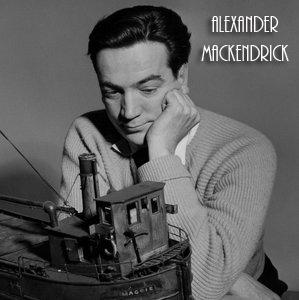 |